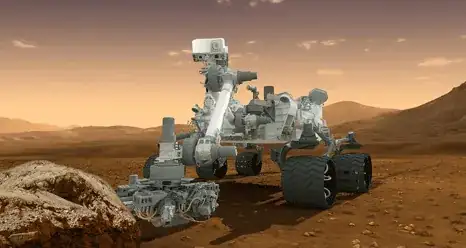I can suggest a few gee-wiz ideas to make a plusible laser excavator.
First, there are lasers designed for blasting holes in material and they work by using intense and ultra-short pulses. This shocks the material and makes it explode like a warm glass that's dropped in cold water. You can search for pulsed laser ablation for more information.
Second, consider the magical way that lasers can cut skin and other tissue so it just melts away without heating the surrounding tissue at all. This works by exciting the molecular bonds with just the right push to break them.
Lasers are also used to determine the chemical composition. And look at the third word in the name Laser-induced breakdown spectroscopy. The ChemCam does indeed leave holes behind!

So, imagine a system that uses laser spectroscopy to determine the exact mineral bonds present in a particular spot, and then blasts it with tuned pulses to disintegrate those bonds.
The final alternative is simply raw power. The Stanford LCLS is an X-Ray laser a trillion times brighter than “traditional” synchrotron light sources, which are themselves many orders of magnitude brighter than normal sources. When it hits a sample, the electrons are simply blown away faster than the heavier nulculi can react, and the following explosion of positivly charged atoms follows at a much slower time scale.
However, raw power is very inefficient. Using energy to break up the material, even using pressure like conventional tunnel boring machines, is far cheaper.
